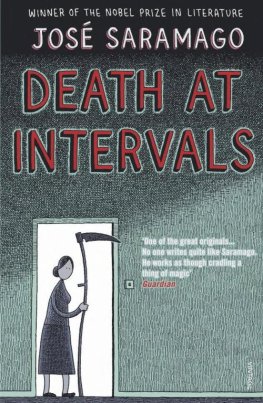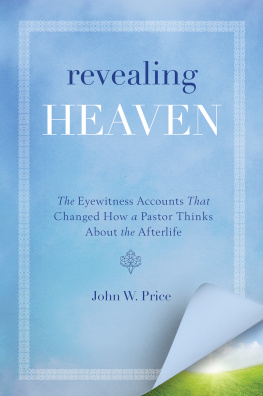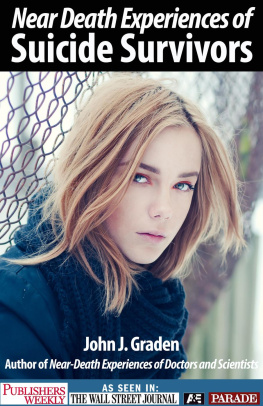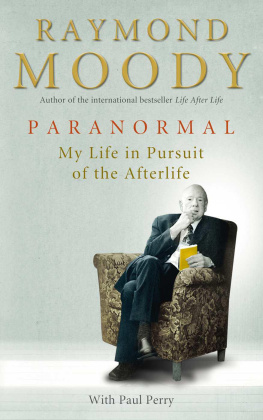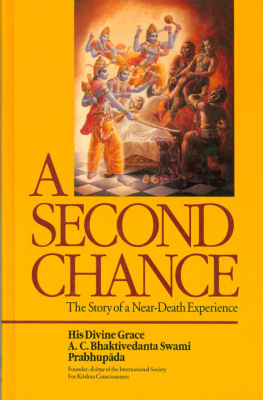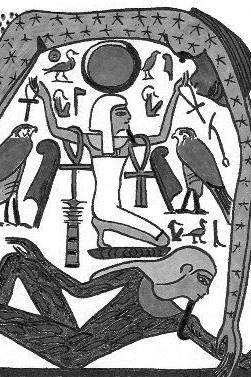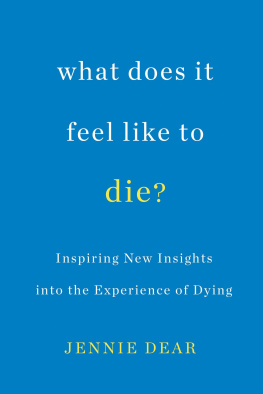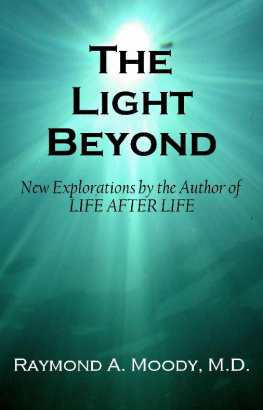Originally published in German under the title
Aus dem Jenseits Zurck by Econ Verlag,
Copyright 1973 by Econ Verlag, Dsseldorf and Wien
English language translation, Copyright 1974 by
Dell Publishing Co., Inc.
Excerpt from The Life Beyond Death on pages 191-194
reprinted by permission of G. P. Putnam's Sons from
The Life Beyond Death by Arthur Ford as told to Jerome
Ellison, Copyright 1971 by Jerome Ellison.
All rights reserved. No part of this book may be reproduced in any form or by any means without the prior written permission of the Publisher, excepting brief quotes used in connection with reviews written specifically for inclusion in magazine or newspaper.
Manufactured in the United States of America
First printing
Designed by Deborah Speed
Lib rary of Congress Cataloging in Publication Data
Glimpses of the beyond.
Translation of Aus dem Jenseits zurck, published in 1973.
1. Spiritualism. I. Title.
BF1263.K8713133.9'01374-8054
ISBN 0-440-03287-3
Co ntents
INTRODUCTIONvii
1"I'm Not Afraid of Dying Any More!"3
2A Ballerina Sees into the Future17
3People on the Threshold29
4Returnee from Vietnam43
5Sealed Lips55
6Death on Call63
7Souls Ill at Ease77
8"And Then I Was Back on Earth Again"89
9"I Spoke to My Darling in the Beyond!"105
10Counterfeit Death?119
11The Suicide of Red Square131
12"Volunteers Sought for Encounters with Death!"143
13Three Weeks in the Beyond157
14In the Cave of the Dead169
15Excursions into Various Spheres185
16The Living Dead199
17The Final Balance211
BIBLIOGRAPHY215
A Necessary Word of Introduction
THE DARKLING THRESHOLD between being and what seems to be not-beingthe reef on which life goes aground, only to set sail on a new journey into the unknownsince time's beginning has aroused intense curiosity in mankind. The quest for unequivocal evidence and clear answers has always been with us. Our civilization tries to drive death from the human consciousness, yet at some time or other everyone becomes wrapped up in the question.
So far there is no final scientific determination proving that when a person dies everything is absolutely finished. Neither is there any proof, unequivocal and independent of faith, of the existence of a something that lives on after death despite the body's decay. Thus, the seeker is torn between the inadequate findings of science and the myriad interpretations of world religions old and new. He casts about for any ray of light emanating out of darkness, for any evidence that something in us does last beyond death, or that gives some inkling as to what existence after death might be like.
vii
Unsteady planks of bridges leading whither no one sees or knows, floating bits rising up out of murky depths, mirages in which the bright images of hopeful fantasy are closely intermingled with the anxiety dreams of sick mindsall these we have brought together into a mosaic. For there have been and are people who have stood on this threshold and who affirmwho personally are completely convinced that they have been "out yonder" on the other side and made a return from this other state of being.
We shall repeat word for word what they have recounted about their experiences on "the other side." Each of you can then judge for yourself and bring your own point of view to bearthe critical reader , the doubting psychologist, the ice-cold nay-sayer on principle.
Only one thing: None of you should look at this matter too simplistically or reject out of hand every- thing that can be recounted of another worlda subject that, after all, has engrossed the wisest minds of all ages.
Who can discriminate errorlessly between reality and the flickering tremors of a spirit clinging desperately to this world; between actual experience and a dying person's wishful images; between true events and the hallucinations of someone clinically dead, whose brain was perhaps already subjected to physiological change before chance or medical art restored him to life? It is not impossible to interrogate the brain about life after death, or, at any rate, about what so many designate as such. The brain lives differently and longer than science has heretofore believed.
Even quite some time ago doubts were stirring about the early onset of irreversibility in the death of the brain intra vitam, that is, while other parts of the body are still technically alive. Wishful thoughts about making death reversible are as old as man. The experiments of University of Cologne docent Dr. Konstantin Hossmann, who works with Professor Dr. Klaus Zulch, head of the Max Planck Institute of Brain Research at Cologne-Merheim, have shown that signs of life can be restored in brain cells deprived of a blood supply for an hour or more. Later these experiments will be gone into more thoroughly. But suffice it to say for now, these inquiries contradict the previously held opinion that an absence of blood leads to irreversible brain damage after only eight to ten minutes. Previously the only possibility admitted to was that in some cases of sudden death by accident or acute illness, the circulation of the blood and breathing could again be set in motion after long periods by the use of modern resuscitation methods. But the brain cellswe were assuredwere irrevocably dead.
An experimental team under Dr. Hossmann carried out inquiriesusing complicated experimental techniques (first on animals)aimed at finding out just what structural and functional changes did occur in the brain when the blood supply is cut off for more than ten minutes. It was determined that brain cells become irreparably damaged much later than had previously been supposed. They still reacted positively once the blood supply was restored after an hour, and even longer.
Obviously, the absence of blood gives rise to changes in the brain's blood vessels, that is to say, to a marked contraction. But with the aid of ingeniously devised experimental techniques, Dr. Hossmann and his colleagues were able to reduce the contraction effect. This made it possible to restore cerebral functions .
What was done experimentally at the Max Planck Institute of Brain Research in Cologne-Merheim can come about naturally under certain conditions and lead to the revival of a person already declare d clinically dead.
Thus, what many of those who claim to have been on "the other side" are saying, at the very least, is not concocted testimony invented after the fact, but an actual cerebral experience, something registered by the "I," the self, when it went on a strange journey during a period of clinical death.
With those who have tried to put this experience into words, we shall wander over this narrow threshold where dark depths and luminous heights, this world and the beyond, far and near, become one and have no boundaries, no time, no end.
The seeker who reads these accounts perhaps will find a tentative foothold here and there. He will, at any rate, come to know, for what he may think it worth, what those people say who have been chosen by fate to stumble across the narrow threshold and then come back from the dead to tarry in this world.
In a cemetery in a small south German town, there is a gravestone on which a simple man, remembered now only by his name and the dates of his birth and death, had had his last testament chiseled in the stone:
"Now I know more than the wisest among you."
But is it not possible that the depositions of the clinically dead who lived again may modify this sentiment?


